In 1992, Kellogg’s was collaborating with World Book to deliver educational content to kids on cereal boxes. In addition to its popular encyclopedia (still in print and updated every year), World Book produced Childcraft, a 15-volume set about everything interesting to kids. Childcraft produced the cereal box content.

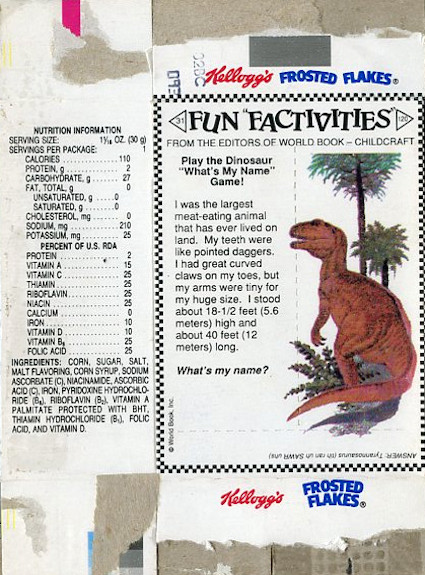
At the time, Kellogg’s Variety Packs included 10 (or sometimes 8?) single serving boxes of cereal. Each one had a Fun `Factivity’ on the back of the box (Figures 1 and 2). I don’t remember how I came across the box of Frosted Flakes below (Figure 3), but I still have it because I recognized the eclipse – the corona had the same shape as an eclipse I photographed 20 years earlier.

The shape of the corona on the cereal box resembled the corona I photographed in Kenya in 1973, but I didn’t know whether each eclipse had a distinctive corona or whether they all looked more or less the same. There was not much of an internet in 1992 so I never resolved the question, but I assumed I had uncovered a Frosted Flakes Fun Fact that would surely impress my friends. So far, no luck with that.
I recently digitized my 1973 negative of the eclipse (Figure 4). This inspired my plan to photograph the nearby 2024 eclipse and test the hypothesis that each total eclipse presents a unique and identifiable corona. I could have used the new and improved internet to learn the answer, but when the weather report looked good for April 8, 2024, I decided to try to learn this Fun Fact the old way.

The solar coronas depicted in Figures 3 and 4 don’t look very similar. The cereal box version has poor resolution, and is rotated 90 degrees clockwise. The rules for presenting eclipse corona photos seems to be a bit lax. This site from a 1973 Williams College expedition to Kenya has six photos of this eclipse in four different orientations (Figure 5). None of these four orientations matches the one in my photo of the same eclipse or the one on the cereal box. But I think all of these photos depict the same eclipse.
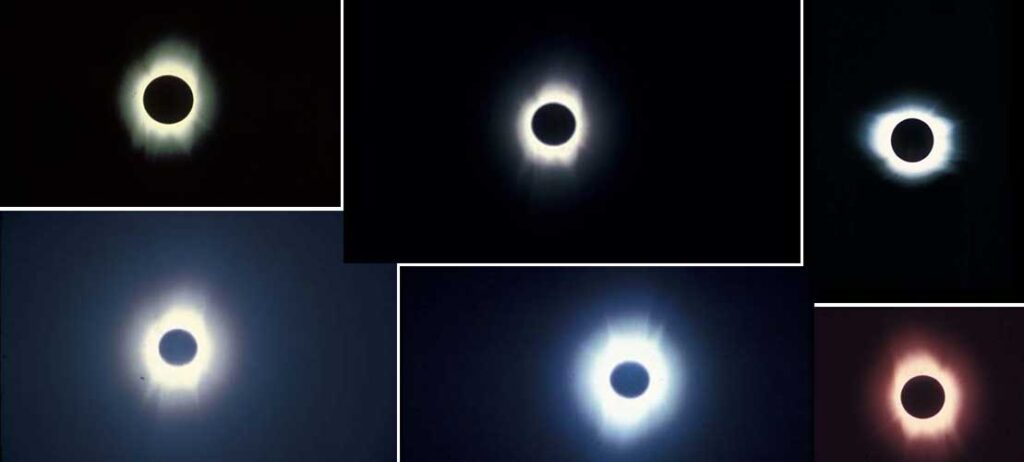
My plan was to take photos of the corona on April 8, 2024 and compare them with my 51-year-old photo. The Sun rotates on its axis about once every (Earth) month, and the coronal structure depicted in 1973 photos could be in a very different orientation during a 2024 eclipse. The Sun also has an 11 year cycle of activity which will peak next year but was average in 1973. So I didn’t expect the corona to match very well after 51 years, but maybe the Sun’s corona always has the same distinguishing features.
I also planned to take photos of the partial eclipse preceding and following totality. This required a filter that blocked most of the sunlight entering the camera. Solar filters are a photographic thing, but I didn’t know that. I had a big pile of bandpass filters (from attempts to do DIY NDVI), so I took along six of them.
I found a corn field by the road near Richford, Vermont about an hour before the eclipse began. I set up two cameras; one for totality and one for pre- and post-totality (Figure 6). The partial eclipse camera had a modern 55-200 mm zoom lens which accepted my filters. I put one on and pointed the camera at the Sun and way too much light came through it. I screwed on a second filter (Figure 7) and a dim, orange disc appeared in the viewfinder when the lens was pointed at the Sun (Figure 8).


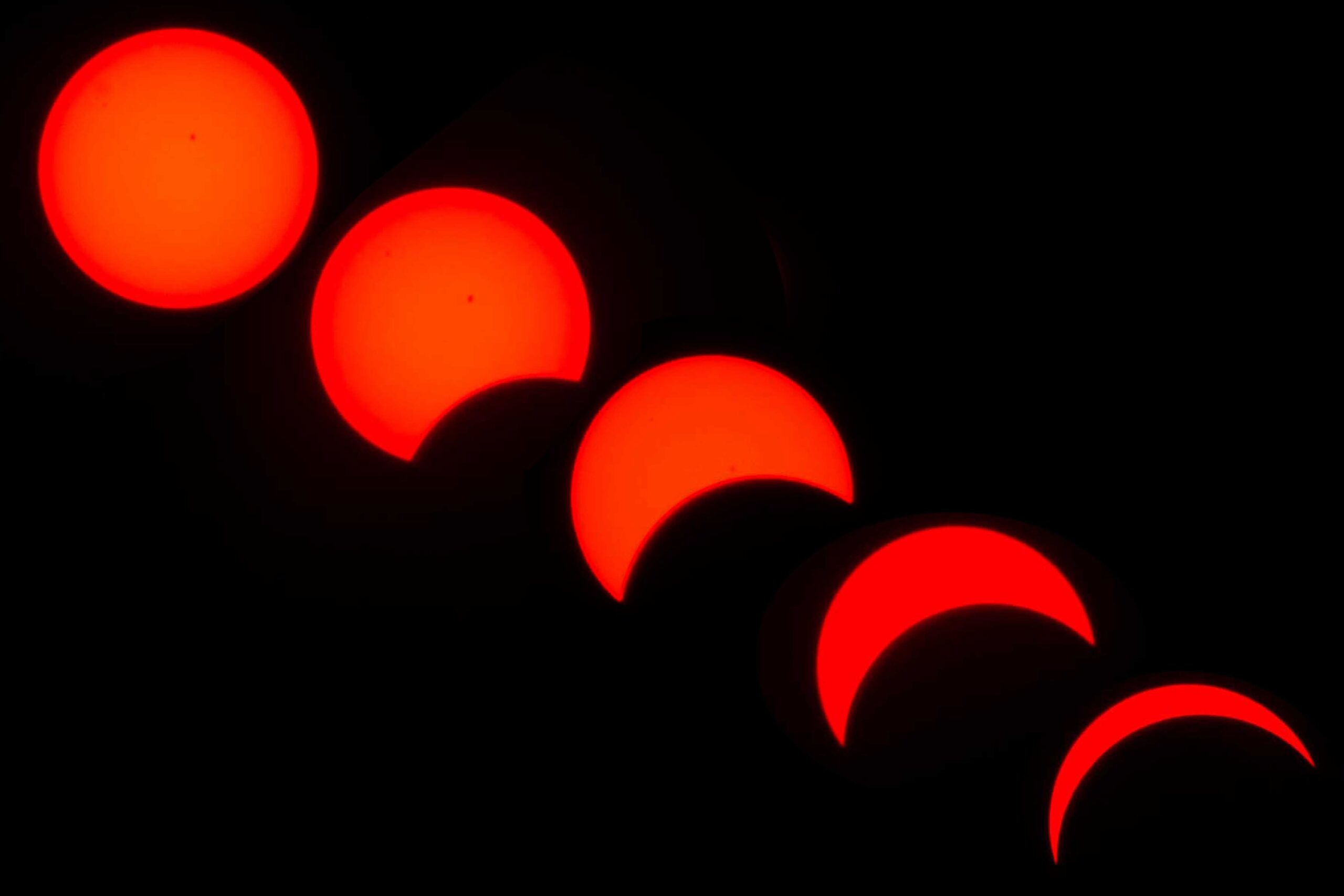
The last photo I took in this pre-totality sequence might technically capture Baily’s Beads as the thin crescent becomes discontinuous, interrupted by the lunar topography at the edge of the Moon (Figure 9).
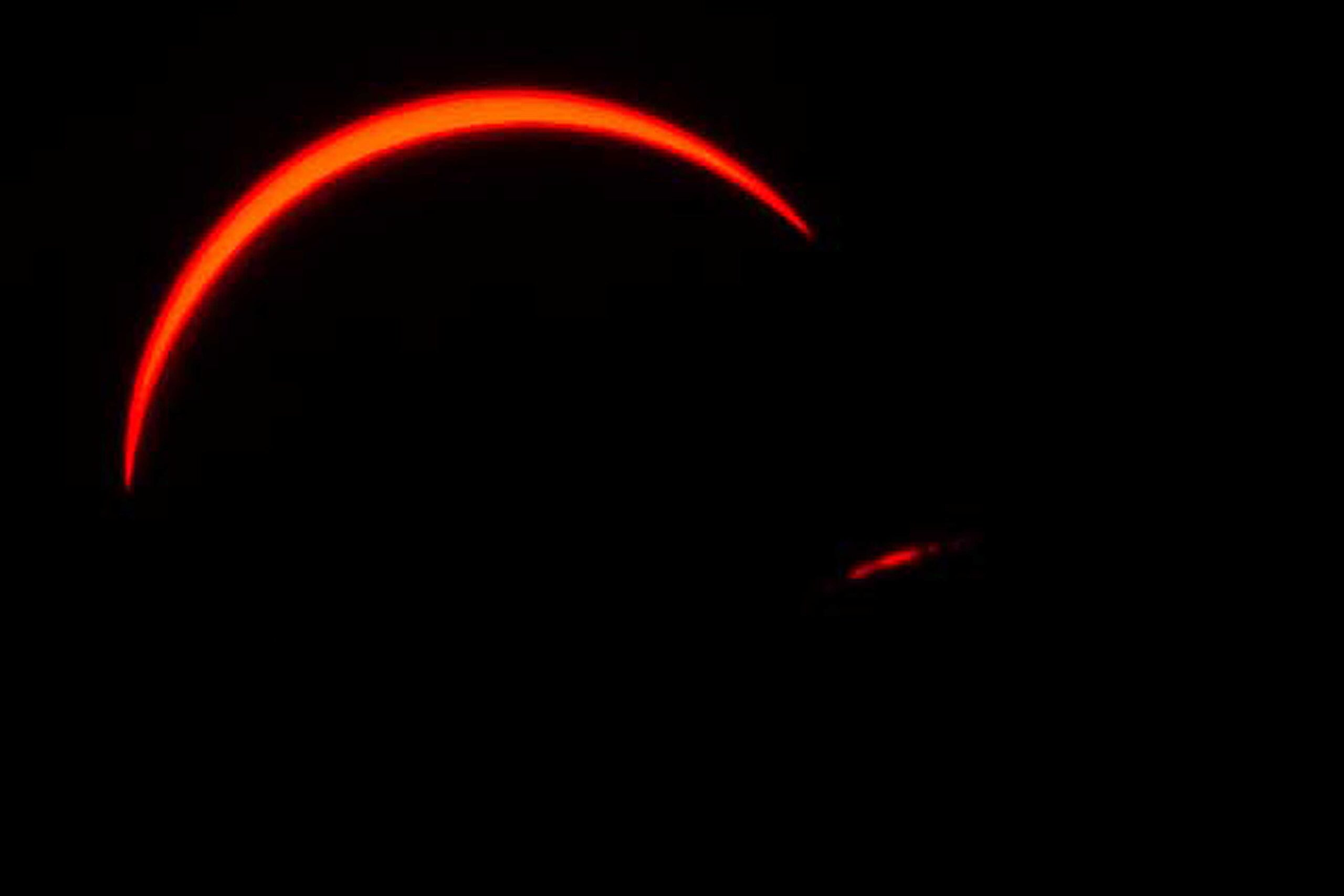
And then it got dark. I immediately stepped to the other camera, found the eclipse in the view finder, and pressed the shutter button. The 1975 lens (bought 15 years ago to make GigaPans) has no electronic connection to the camera, so focusing and setting the f/stop must be done manually. The procedure is to take a photo, look at it on the little LCD, and make adjustments if needed. Adjustments were needed, but I had never used that camera to take photos – I bought it last year to make copies of old color slides. It was dark enough that I could not see the camera controls and had to use my phone flashlight and put on my glasses. I had set the camera to bracket the exposure of each photo but forgot that the camera had no control over the old lens and could not change the f/stop. The lens has an aperture ring so I turned it a stop or two and took another photo. The new exposure looked okay on the tiny screen so I took a few more photos (Figure 10).
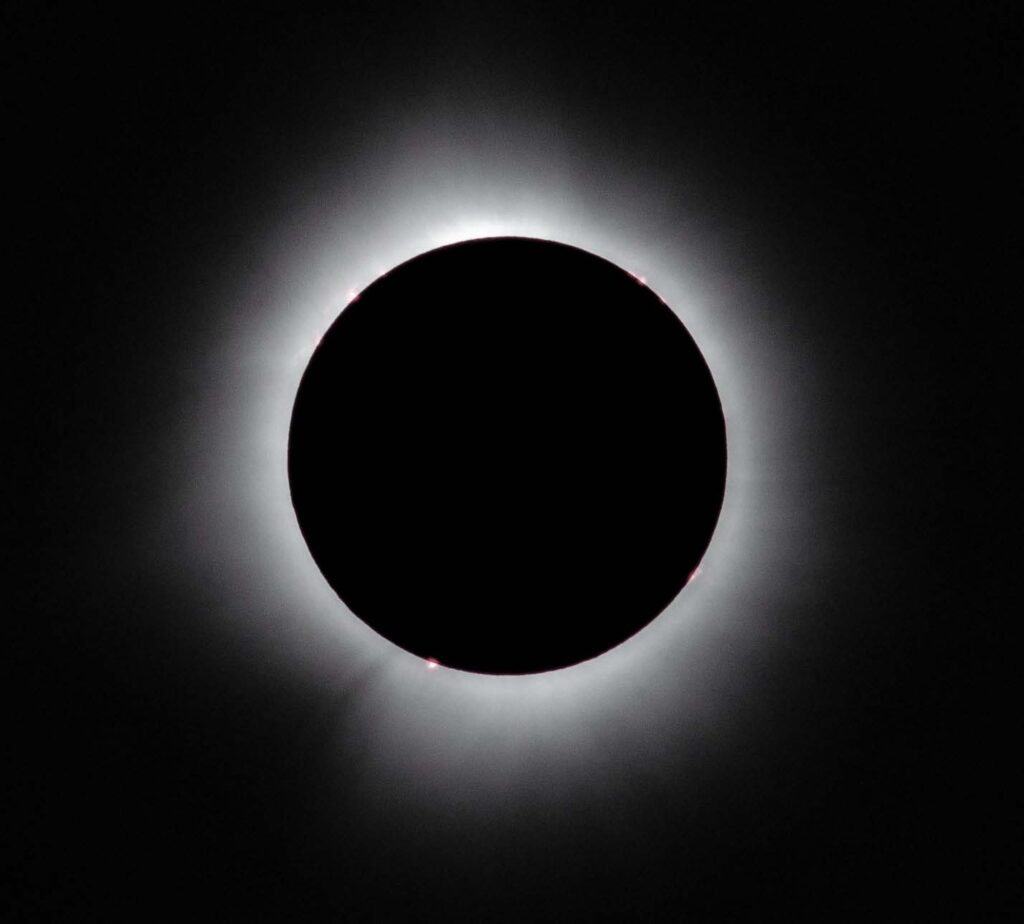
I tried not to be distracted by the eerie stillness, howling canids, hooting owls, and ravens drifting across the corn field. They were not going to help me get the correct exposure.
The teenagers who parked next to me had returned from walking along the railroad tracks and driven away a few minutes before totality started. Maybe they wanted to be home in the basement when the Sun summoned its malefactors. Now I was alone in the corn stubble and dimness.
I looked through binoculars for the first time and was shocked by the bright pink solar prominences. I had not seen those in previous eclipses and had assumed that total eclipses were black and white phenomena. I immediately went back to the camera and took some more color photos. The later photos reveal a different subset of solar prominences, this time all on the trailing edge of the Moon (Figure 11).
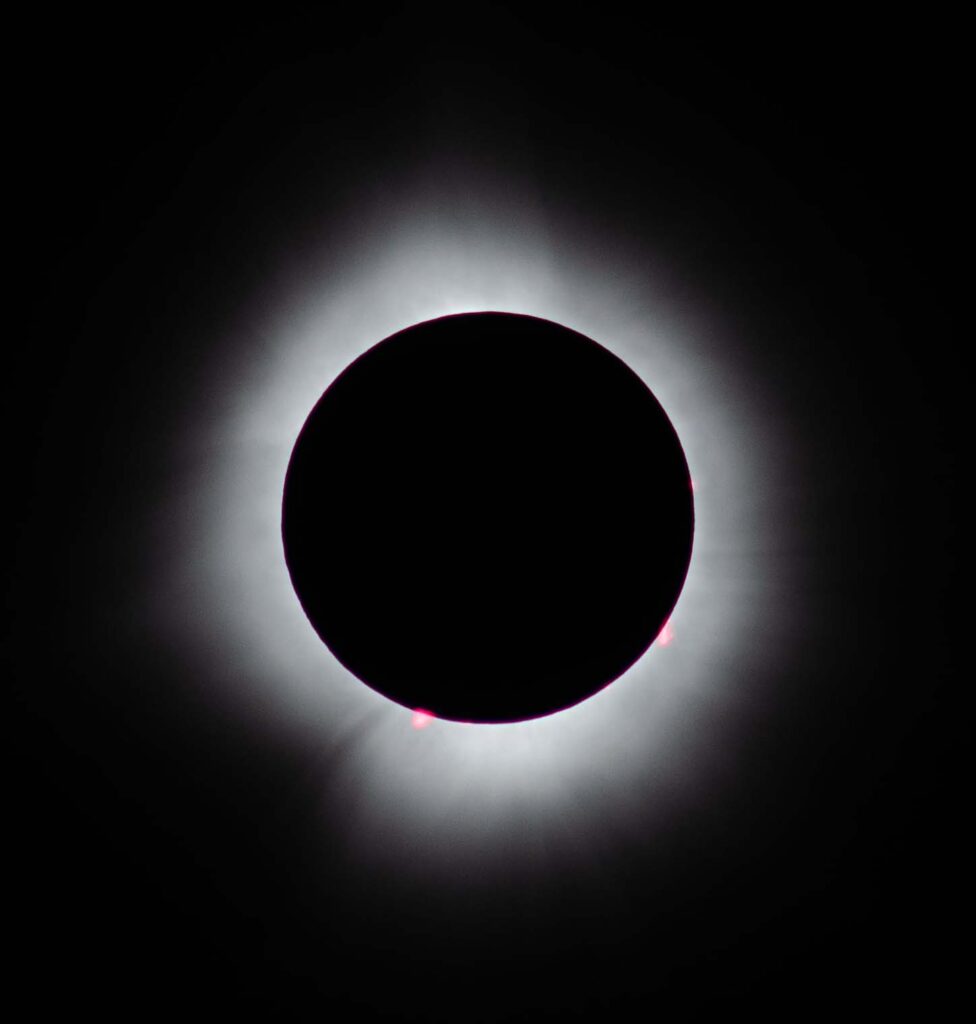
Below is a cropped version of Figure 11.
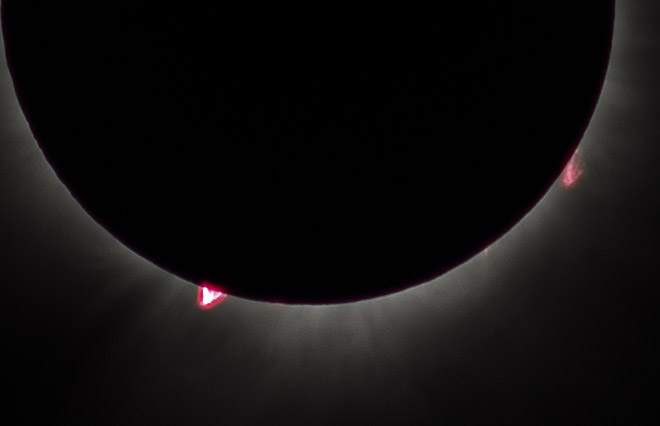
I took only 13 photos during the 3.3 minutes of totality. I doubted that the photos I was taking were any good, but there were no clouds, no crowds, it was a beautiful day, and all was going to plan. The photos I took have timestamps which allow me to reconstruct the passing of totality. Except that all I did during the last minute and a half of it was to take one photo. I have no memory of that minute and a half and no inkling of what I was doing. Eventually I stepped to the camera again, found the sun in the viewfinder, pressed the button, and before the two-second self-timer finished, light erupted into my face.
The 3.3 minutes was over. That last photo missed the diamond ring by a second or two, but maybe it still counts. Or maybe I found a new phenomenon called the opal ring (Figure 12)?
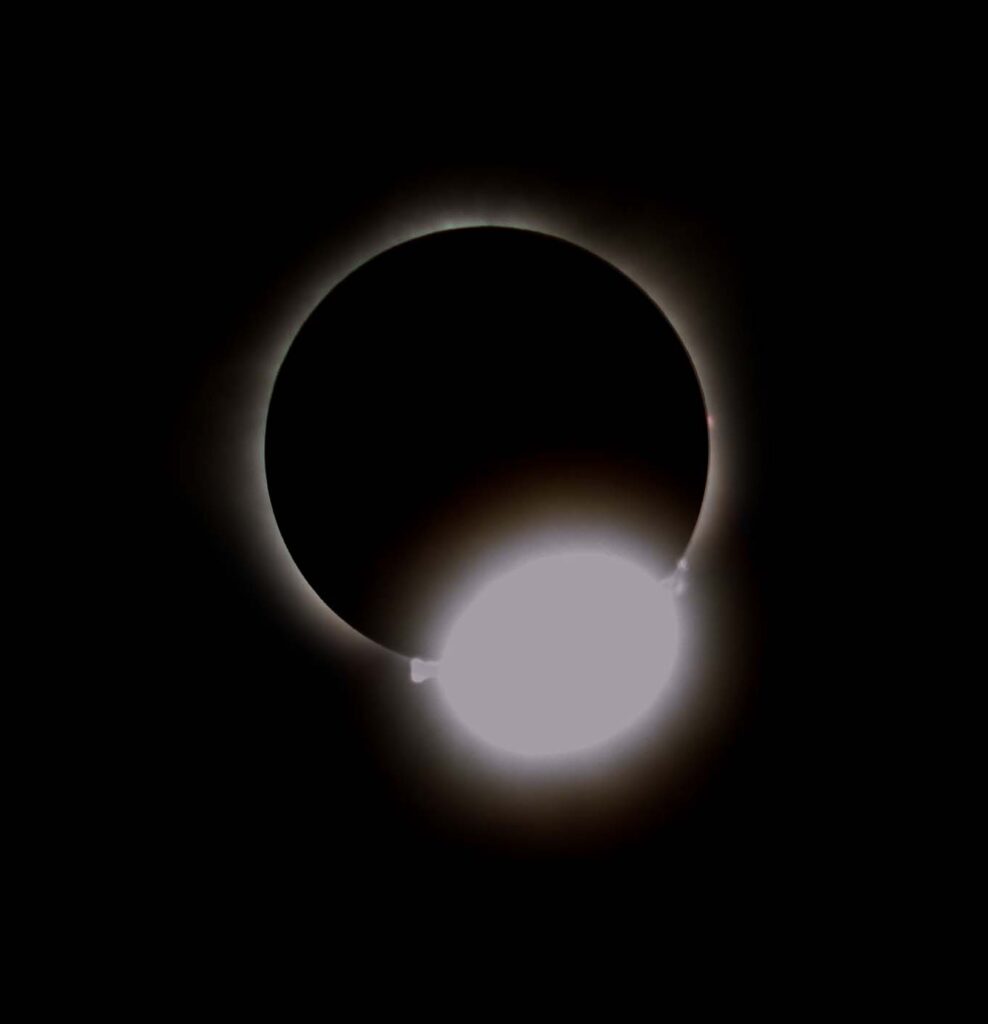
I switched back to the filtered camera and took 65 photos during the next one hour and seven minutes until fourth contact (end of eclipse). Most of these were taken without repositioning the camera so the path of the Sun was recorded by sequences of five or six photos over 15 to 20 minutes (Figure 13). Prior to totality, I had pointed the lens away from the Sun between each photo to protect the camera, but I decided that the filters were not passing enough light to be harmful, and also there is a real shutter, and the light just reflects off the mirror into the prism and through the viewfinder never reaching the sensor until you take a photo. So I left the lens pointed at the glaring sun and took a photo every few minutes.
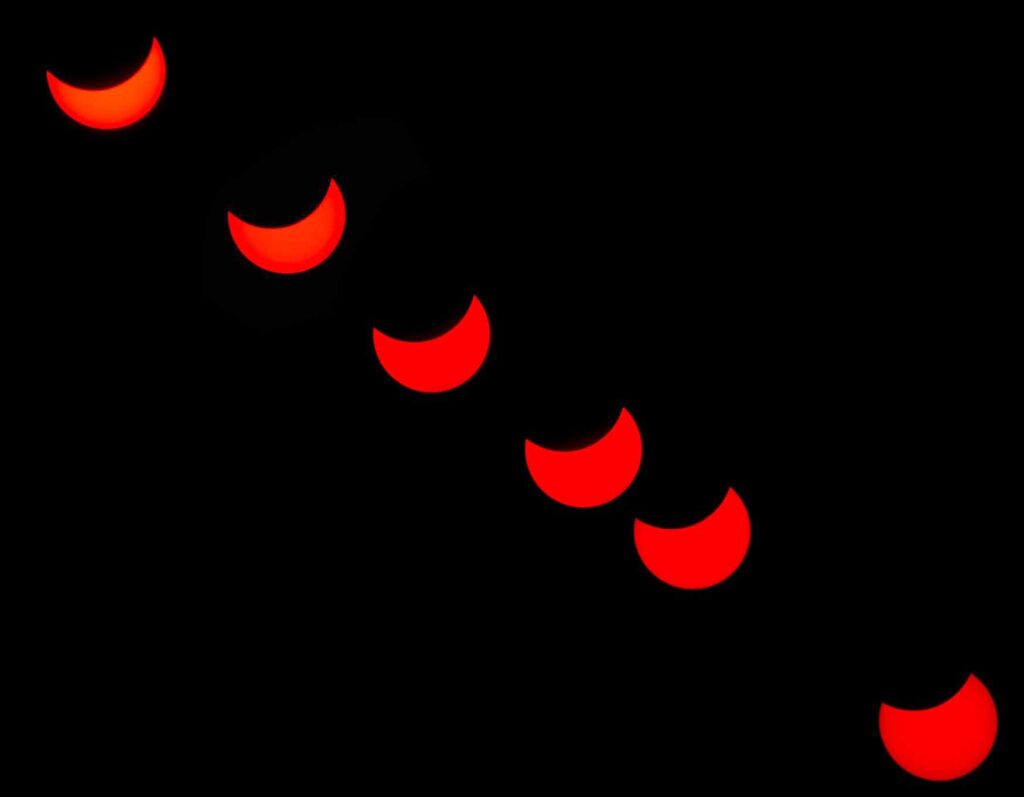
I have always been impressed by composite images of multiple stages of the partial eclipse on either side of heroic corona image. Having finally made one (Figure 14), I now realize they don’t add much information and can be misleading about how an eclipse proceeds. Their primary message seems to be that the author thinks he knows how to take eclipse photos.
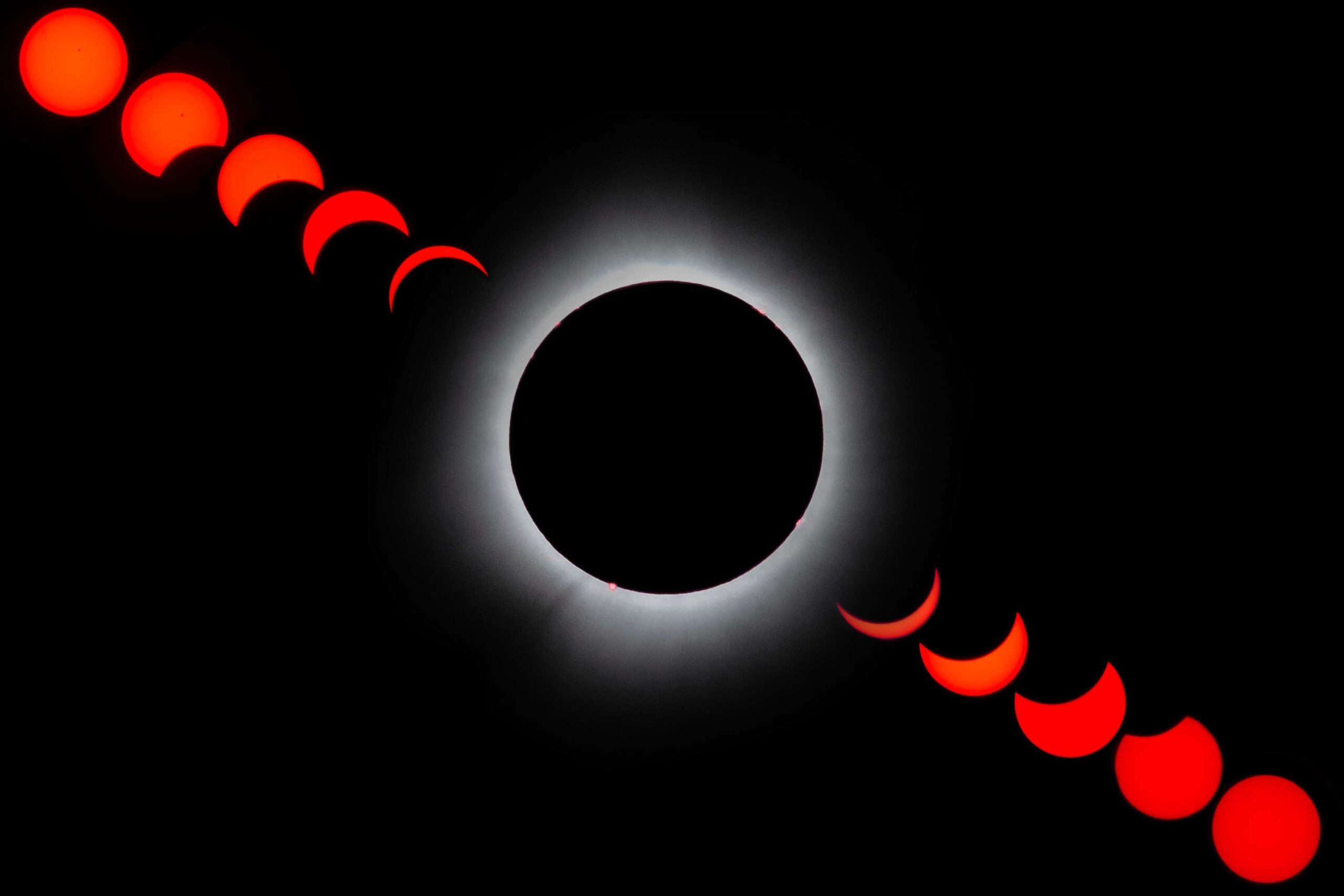
I guess I have an answer to my 30-year-old question about identifying eclipses from corona photos. The 2024 corona was conspicuously different from earlier eclipses (Figure 15). The corona does not change much during the few minutes of an eclipse, but it seems to change a lot between eclipses. Even the three eclipses during a three year period in the 1970s are distinct. The 2024 eclipse has the least interesting corona shape of all four. The Sun is expected to reach a peak in its 11-year activity cycle next year (Figure 16), but the 2024 corona does not seem to be peaking. Solar activity was rather average in 1973 but that corona has a more impressive structure than the others. So with this sample, the 11-year solar cycle is not obviously reflected in the corona shape.
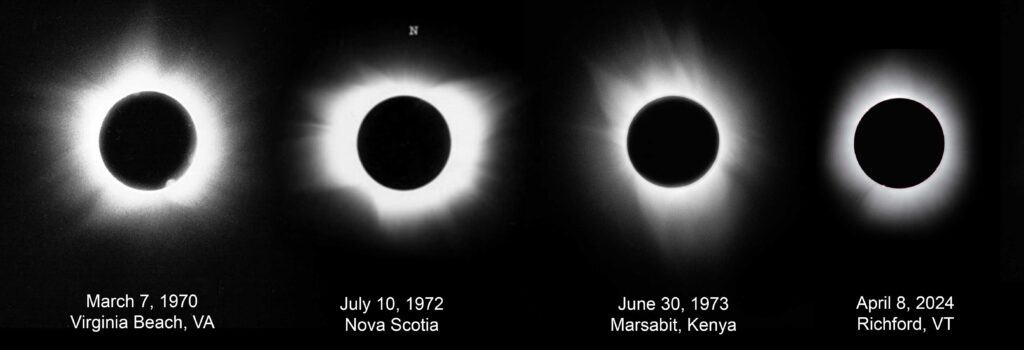
A confounding variable is that photos made with longer exposures can appear to have larger coronas. Many photos of the 2024 eclipse look just like mine, but a few show longer streamers in a distinctive pattern (Figure 17). Some show hardly any corona but highlight the solar prominences (Figure 18).
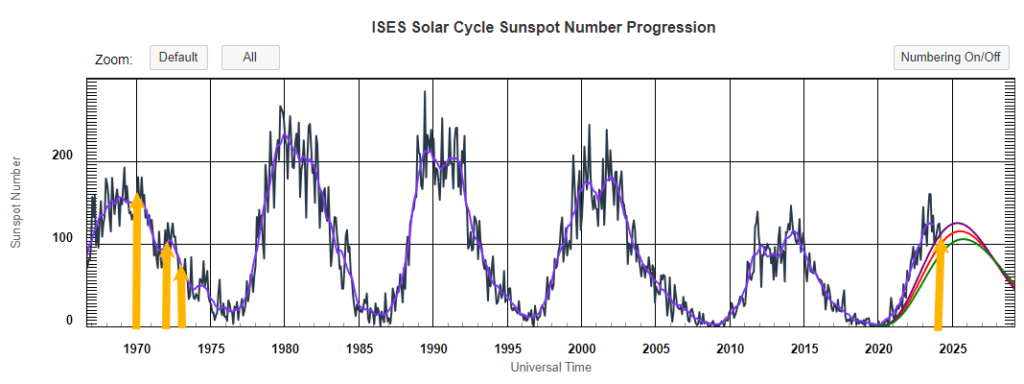
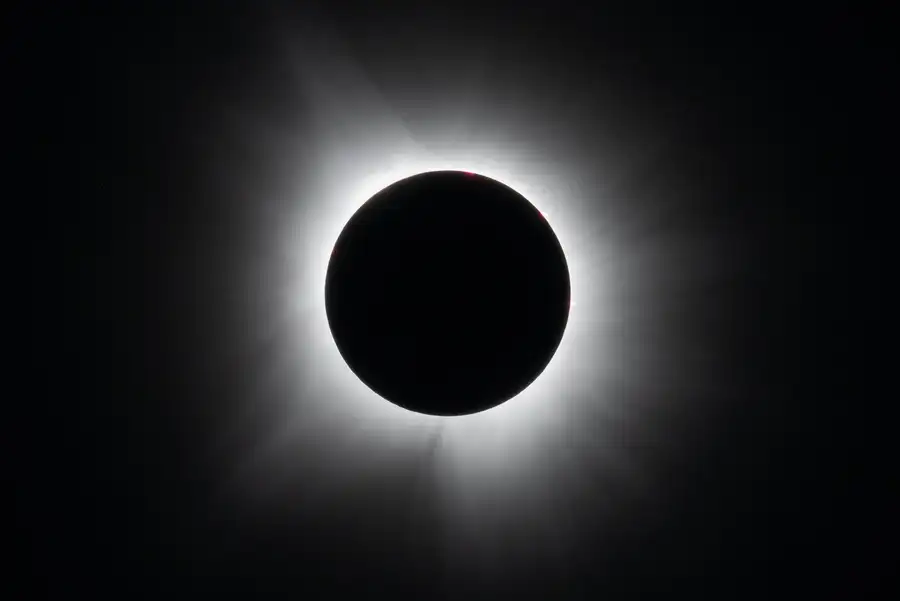
If the coronas in Figure 15 are rotated to find the best match with each other, there is a similarity among some of them. We need to outlaw the posting of eclipse photos unless their orientation has been verified by a non-partisan governing body. Until then, I am not sure how much of the subtle corona similarities might be due to the fact that they are all photos of the same yellow-dwarf star.
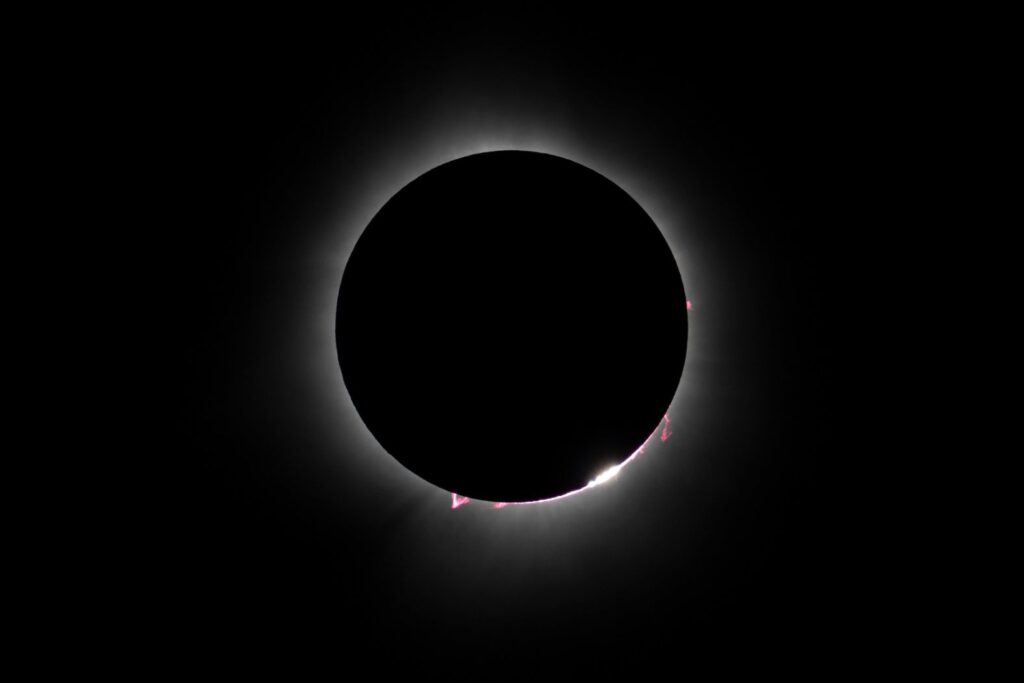
Photos taken during any single eclipse seem to resemble each other well, and I was probably correct that the 1992 cereal box featured a photo of the 1973 African eclipse. I will continue to cherish the artifact and strive to defend the honor and motivations of all hoarders.
Having had some success with an empirical approach, I gave AI a shot at it. I asked Google Gemini Advanced, Microsoft Copilot, and ChatGPT 3.5:
Does the solar corona have a consistent structure and therefore a consistent appearance during different eclipses?
They all said a lot of stuff. They agree that there is some long-term consistency in corona structure but then hedge their bets with multiple exceptions to that rule. ChatGPT offered the best summary:
“Overall, while the solar corona does have a generally consistent structure, its appearance during different eclipses can vary due to a combination of factors including solar activity, magnetic field configuration, and observational perspective.” -ChatGPT 3.5
None of the large language models bothered to mention that an important cause of differences in “observational perspective” is the Sun’s monthly rotation. For this reason alone, any consistent structure of the corona could be seen from a very different perspective during different eclipses. That omission erodes my confidence that AI has really spent much time thinking about this issue – they certainly never asked for my input. I think driving two hours to Richford was the best way to learn which word is most likely to follow the phrase: Eclipses are all similar but the appearance of the corona differs primarily due to one thing which is ___________.
The next total solar eclipse nearby is in August 2026 in the westernmost peninsulas of Iceland. It might be my last chance to capture the diamond ring. If I go, should I take the artifact and have a single serving of Frosted Flakes for breakfast on eclipse day?

I’m still a bit disappointed that you didn’t invite me to come along in 1970 – it was nothing special from Baltimore. I have had two quite wonderful totality experiences: 1979 and 2017, both within driving distance of Portland (OR).
For 2017, I took a bunch of pretty-good progressive encroachment photos, by simply holding my flimsy eclipse glasses over the telephoto lens of my little Lumix-with-big-zoom. We had perfect totality conditions for about 2.5 minutes, also by ourselves from a quiet farm field out in the country.
When/where is your next one? And when are you getting the tattoo?
In March, 1970 our relationship had not advanced sufficiently to merit an invitation to view an eclipse together.
But now: Please join me in Iceland for the 2026 eclipse. It rains in Reykjavík on 1/3 of the days in August so it is probably cloudy on >50% of the days. However, the active eruption at Grindavík is close to the centerline so we can evade the roadblocks and go there to ensure plenty of material for blog posts.